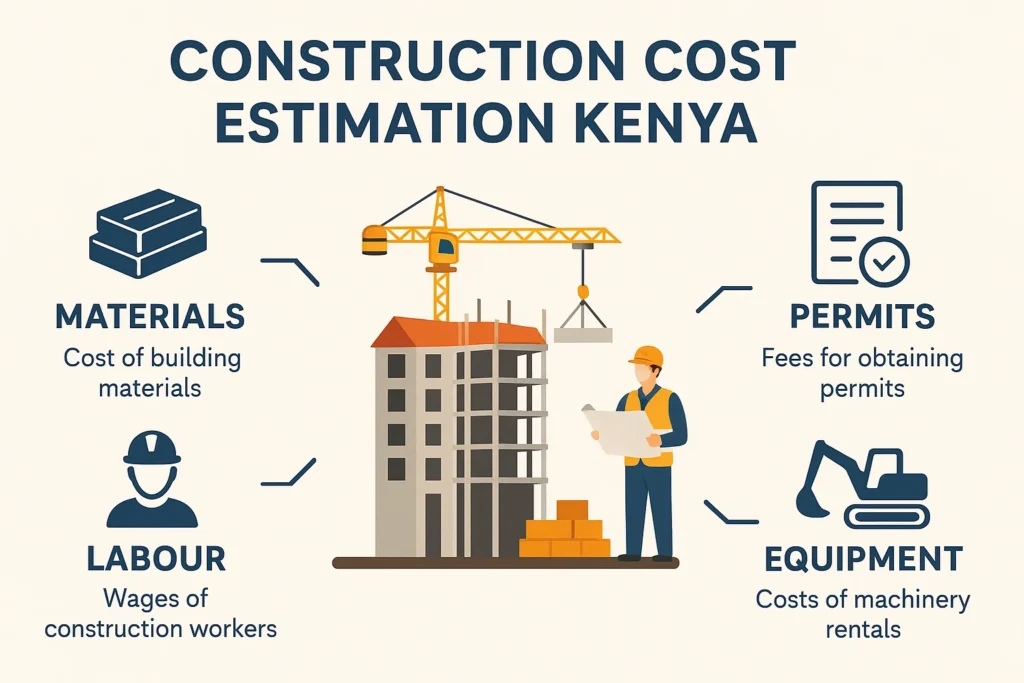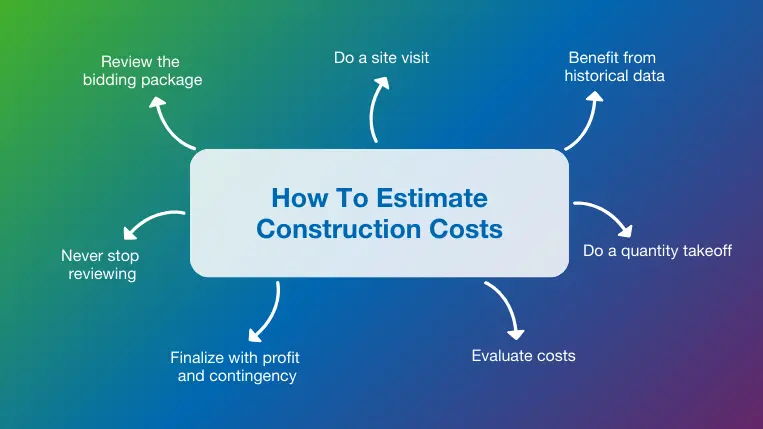Construction Cost Estimation Kenya
Practical step-by-step guide to construction cost estimation in Kenya — up-to-date per-m² rates, regional breakdowns (Nairobi, Coast, Western), hidden costs, sample budgets, calculator tips, procurement & cost-control strategies to plan your building budget with confidence.
Introduction
Construction cost estimation in Kenya is the process of calculating how much money you’ll need to build your home or project — from materials and labour to permits and finishes. It helps property owners, developers, and contractors plan accurately, avoid overspending, and make informed decisions.
This guide is for homeowners building their first house, small developers managing residential projects, and DIY estimators seeking clarity on real market costs. It explains every stage — from rough budgeting to detailed Bills of Quantities (BoQ) — in a simple, step-by-step format.
Use it to estimate your building budget, refine it based on finishes and region, then confirm accuracy with a qualified Quantity Surveyor (QS) before breaking ground.
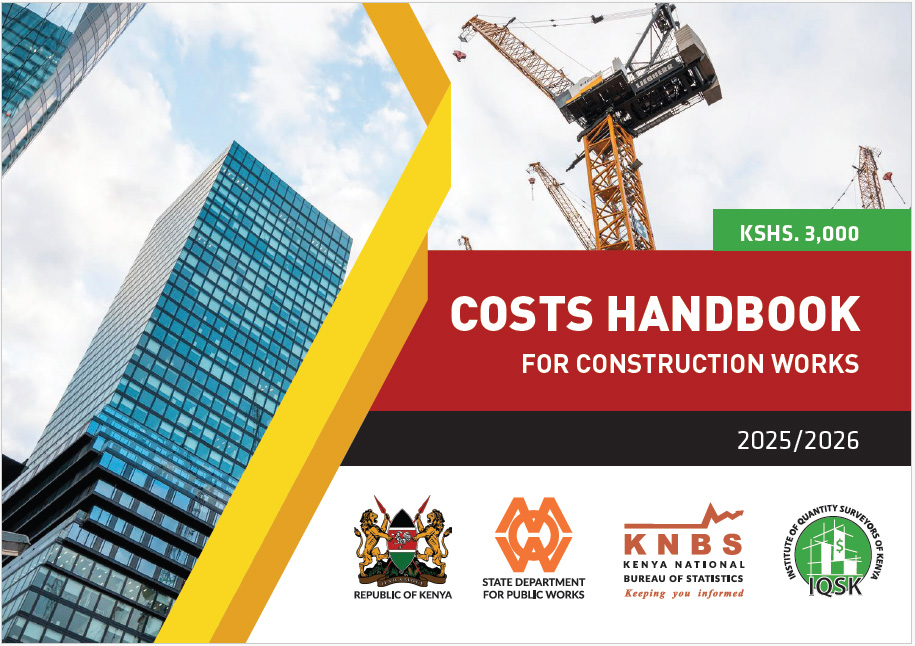
Current Cost Benchmarks & Trends (Updated)
National per-m² ranges (standard/mid/luxury)
As of 2025, construction cost estimation in Kenya ranges between Ksh 35,000–45,000 per m² for standard finishes, Ksh 50,000–65,000 for mid-range, and Ksh 70,000–100,000+ for luxury homes. Data from firms like INTEGRUM and estate developers show steady cost increases of 5–10% annually. These benchmarks help you create a realistic budget before selecting materials or designs.
Regional variations: Nairobi, Coast, Rift Valley, Western, Upcountry
Building costs differ significantly across Kenya. Nairobi and its suburbs (Kiambu, Machakos) attract higher rates due to labour and logistics, averaging Ksh 55,000–75,000 per m². Coastal regions like Mombasa and Diani are affected by humidity and saline materials, while Naivasha, Eldoret, and Kisumu often benefit from cheaper local labour and materials. Rural counties remain the most affordable but may lack reliable suppliers.
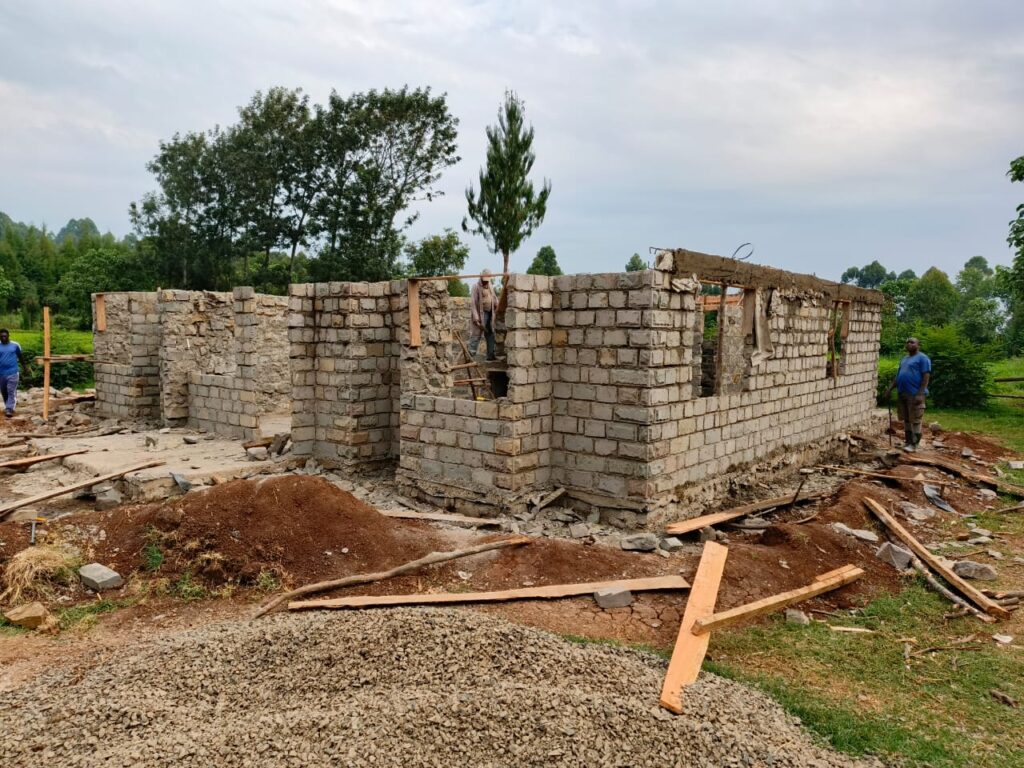
Short-term price drivers & trends (cement, steel, fuel, forex, supply chain)
Inflation, fuel prices, and foreign exchange fluctuations are the biggest short-term price drivers. Cement and reinforcement steel have risen by 15–20% since 2024, while fuel and import delays affect transport costs. Builders should factor in a 10–15% contingency for unforeseen market changes — especially on long-term projects.
Sample rate table (copyable) — rates per m² by finish and region
When estimating your building budget in Kenya, use sample per-square-metre rates as a guide. A mid-range three-bedroom home in Nairobi may cost Ksh 6.5–7.5 million, while a similar home in Western Kenya might cost Ksh 5.5–6 million. Adjust your estimate based on materials, design complexity, and finish level to stay within range
Full Step-by-Step Estimation Process (Practical, Actionable)
Define scope: house type and floor area
Start by defining your project’s scope — whether it’s a bungalow, maisonette, or apartment block. Multiply the gross floor area (GFA) by the cost per square metre that matches your preferred finish. This gives you a quick, ballpark estimate to refine later when planning materials and finishes.
Select specification: basic to luxury
Your house specification determines the final cost. Basic builds use simple finishes and fittings, while luxury homes include imported tiles, hardwood, and premium roofing. Always match your specification to your budget — most homeowners choose the standard or mid-range tier for balance between cost and durability
Unit-rate method: area × rate/m² — example
Multiply your total floor area by the selected rate per m². For example, a 150m² 3-bedroom house in Nairobi at Ksh 55,000/m² would cost around Ksh 8.25 million. Include 10–15% for contingencies and unforeseen changes. This simple formula helps create quick estimates before hiring professionals
Bill of Quantities (BoQ) vs elemental estimate vs square-metre method
A Bill of Quantities is the most accurate method, itemising every material and labour cost. Elemental estimates group items (foundation, walls, finishes), while the square-metre method gives rough estimates for budgeting. Always consult a Quantity Surveyor (QS) for detailed costing before tendering to avoid underestimation.
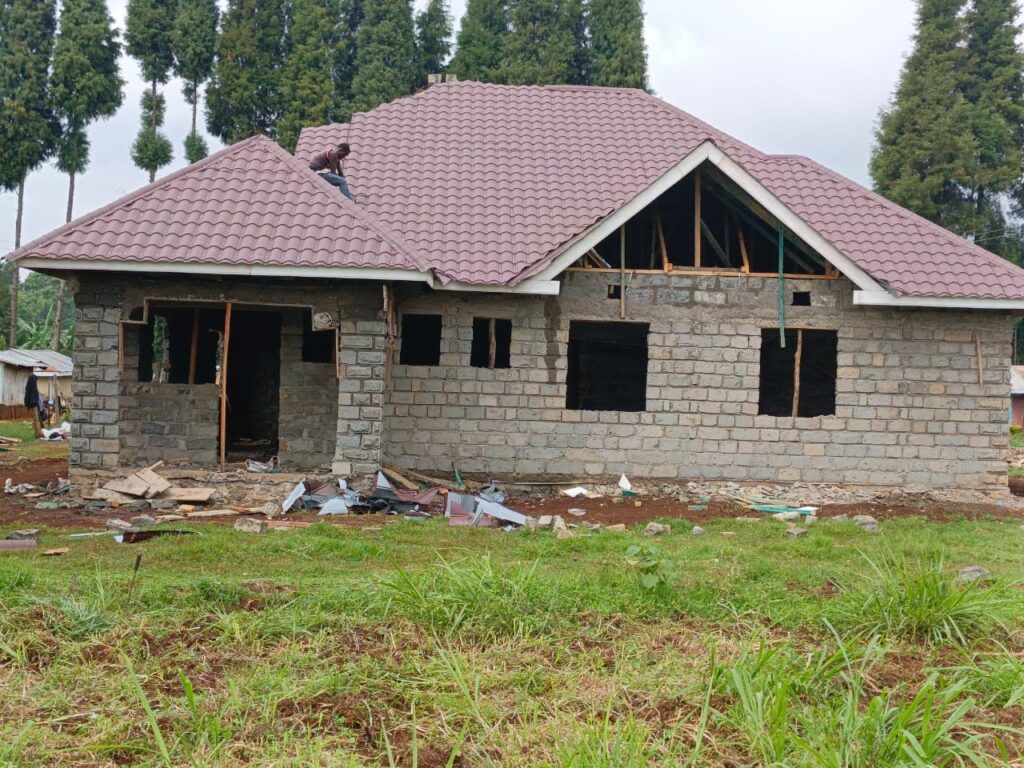
How to build a quick Excel estimator or use an online calculator
Create a simple Excel sheet listing each component — substructure, superstructure, finishes, and services — with rates per m². Online calculators also exist for rough budgeting, but always verify against updated market rates. These tools are ideal for tracking your budget throughout construction.
Hidden & Additional Costs You MUST Include
Land preparation: clearing, excavation, soil improvement
Before construction begins, you’ll incur costs for clearing vegetation, leveling ground, and digging foundations. Sites with weak or waterlogged soils may need soil stabilisation or piling, adding up to 5–10% of total costs. Always inspect soil conditions before budgeting.
Foundation surprises: soft soils, water table, retentions
If your site has unstable or clay soils, extra reinforcement and concrete may be required. High water tables increase waterproofing and drainage expenses. A 5–8% contingency budget protects against these foundation surprises.
Permits & statutory fees: county, NEMA, water & sewer
Budget for county building approvals, NEMA environmental assessment, and connection fees for water and sewer. These typically range from 1–3% of total project cost, but vary by county. Failing to include them can stall your project timeline.
Professional fees: architect, structural engineer, QS, clerk of works
Professionals typically charge between 4–8% of total construction cost, depending on project size and scope. Their input ensures compliance, safety, and efficiency — saving money in the long run. Never skip expert consultation for short-term savings.
Utilities & service connections
Allow funds for electricity, water, and waste management connections. In remote or new estates, transformer or borehole contributions can increase your total cost significantly. Always confirm connection fees early with relevant authorities.
VAT, taxes, insurance
Kenya’s construction industry applies 16% VAT on most professional services and materials. Contractor’s all-risk and public liability insurance are also required for safety compliance. These costs safeguard your project against unforeseen losses.
Landscaping, boundary wall, gate, driveways, external works
Many homeowners forget external works — yet they can cost Ksh 500,000–1.5 million depending on design and materials. Include the compound wall, paving, garden, and gate in your final estimate to complete your home properly.
Procurement, Contracts & Payment Schedules (Risk Management)
Procurement options: full turnkey, labour-only, management contract, employer-procured materials
In construction cost estimation in Kenya, procurement choice directly affects your final price and control level. A turnkey contract lets a single contractor handle everything for a fixed sum, ideal for busy owners. Labour-only means you buy materials while the contractor provides labour — cheaper, but riskier without supervision. Management contracts and employer-procured materials offer flexibility for experienced developers who want tighter cost oversight.
Contract types and where cost risk sits (lump sum vs remeasurable vs cost plus)
Every contract type shifts cost risk differently. Lump sum contracts fix the total price upfront, placing risk on the contractor. Remeasurable contracts adjust costs based on actual quantities, while cost-plus adds a margin on verified expenses, favouring transparency. Choose one that balances your building budget and risk tolerance.
Payment schedule templates & milestone examples (how to protect cashflow)
A well-structured payment schedule prevents disputes and cashflow shortages. Divide payments by milestones — for example, foundation, wall plate, roofing, and finishes. Always withhold a small retention (5–10%) until completion to ensure accountability. Clear scheduling keeps both client and contractor financially aligned throughout the build.
Mobilisation, retention, interim valuations, final accounts
Mobilisation fees (10–20%) help contractors start site work and buy initial materials. Interim valuations certify work done before payment, while retention safeguards quality until defects are fixed. Final accounts reconcile all payments and variations at project close, forming the official completion record for your cost estimate.
Labour & Material Cost Breakdown (Practical Numbers + Sourcing)
Typical labour split (%) and how to estimate labour costs per task
Labour contributes roughly 25–35% of total building costs in Kenya. Skilled trades like masonry, plumbing, and electrical work demand higher rates, especially in urban areas. To estimate labour costs, multiply local daily wages by task duration and crew size — then compare with QS benchmarks for accuracy.
Material costs: cement, sand, ballast, steel, blocks, timber — how to track current rates
Material prices fluctuate weekly, driven by supply chain and fuel trends. As of late 2025, cement averages Ksh 800–950 per bag, steel Ksh 130–160 per kg, and blocks around Ksh 25–40 each depending on size. Always check updated supplier price lists to keep your building budget in Kenya realistic.
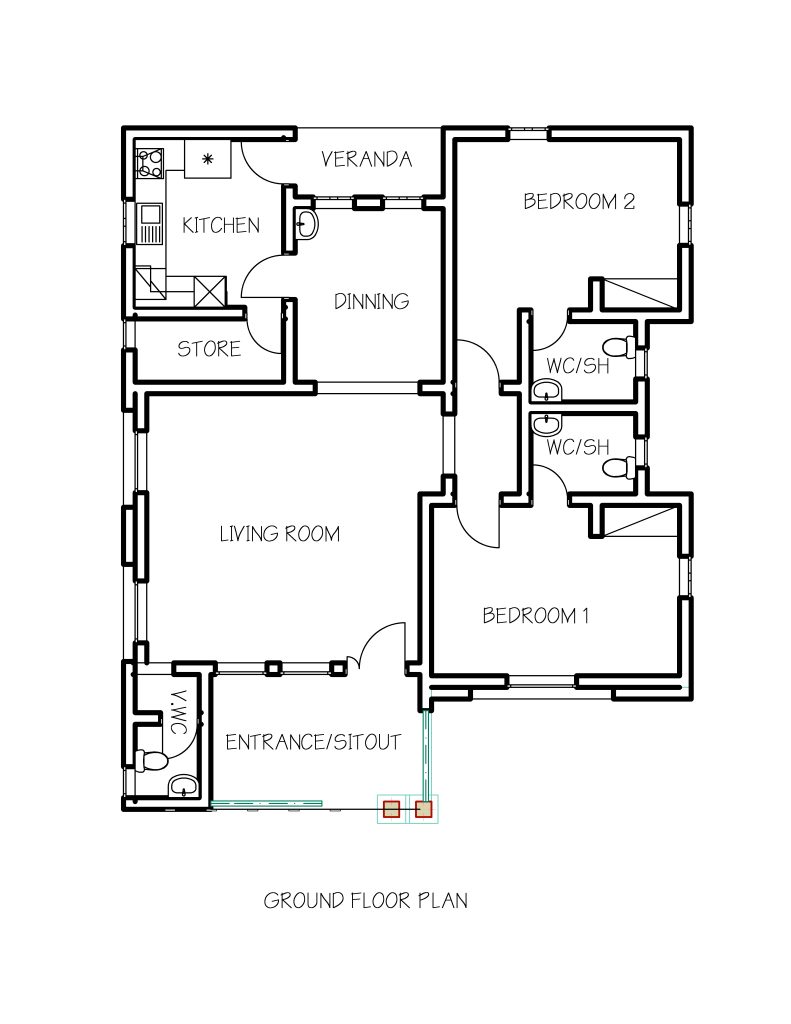
Local sourcing vs imports (benefits, transport & forex effects)
Locally sourced materials reduce transport costs and delays, while imported finishes often raise your total cost estimate. Exchange rate fluctuations make imported items like tiles, fixtures, or roofing unpredictable. Whenever possible, use Kenyan-made alternatives for better value and support of local industries.
Bulk buying & group procurement tips
Buying materials in bulk can lower your total cost by 5–10%, especially for cement, steel, and roofing sheets. You can also join neighbourhood group purchases to negotiate wholesale prices and shared transport. Always confirm product quality and store materials properly to avoid wastage losses.
Timelines & Phased Budgeting
Typical build timeline by house type (2-bed / 3-bed / maisonette) and impact on cost
Build timelines in Kenya vary by house type and design complexity. A simple 2-bedroom bungalow can take 4–6 months, a 3-bedroom 6–8 months, and a maisonette 8–12 months. Longer projects attract higher costs due to site overheads, inflation, and labour price changes — so efficient scheduling directly protects your building budget in Kenya.
Phased budgets: design & approvals, structure, finishes, services, external works
Divide your total project into phases to manage cashflow effectively. The design and approval stage takes about 5–10% of the total cost, structure 40–50%, finishes 25–30%, services 10–15%, and external works around 5–10%. This phased budgeting method ensures funds are available at every stage of construction.
How delays add costs (inflation, site overheads, labour idle time)
Delays in construction can quickly inflate your cost estimate for a house in Kenya. Idle labour, extended equipment hire, and rising material prices add up fast. Always factor in weather risks, permit delays, and supply chain challenges when creating a project timeline.

Value Engineering & Cost-Control Strategies
Design choices that save most cost (plan compactness, simple roofs, standard sizes)
A smart design is the foundation of cost efficiency. Compact floor plans reduce walling and roofing costs, while rectangular layouts are easier to build. Avoid complex roof designs or unusual window sizes — they raise labour and material costs unnecessarily in construction cost estimation Kenya.
Smart finish substitutions (choices that look premium but cost less)
You can achieve a high-end look without luxury prices. Replace imported tiles with high-quality local ceramics, choose gypsum ceilings over heavy timber, and use laminate flooring instead of hardwood. These substitutions maintain aesthetics while keeping your building budget Kenya affordable.
Monitoring: daily site log, weekly budget reviews, change order control
Tracking progress is critical for cost control. Keep a daily site log for materials and labour used, review budgets weekly, and record every design change order. This habit prevents small overruns from turning into major budget shocks by ensuring transparency and accountability.
When to cut scope vs when to invest (long-term value decisions)
When your budget tightens, prioritise structure and essential systems first. You can postpone external works or luxury finishes. However, investing in quality plumbing, roofing, and foundations pays off long-term by avoiding costly repairs later. Always balance immediate savings with durability.
When to Use a Quantity Surveyor (QS) & What to Expect
QS deliverables: BOQ, cost plan, interim valuations, final account
A professional Quantity Surveyor (QS) offers detailed cost breakdowns and accountability throughout construction. Their deliverables include the Bill of Quantities (BoQ), a cost plan, interim payment valuations, and a final account. These documents form the backbone of reliable construction cost estimation in Kenya.
Typical QS fee structures and how to procure one
QS fees in Kenya typically range from 3–5% of total construction cost, depending on project scope. You can engage one through direct referral, professional associations, or your architect’s network. Always sign a written engagement agreement detailing services and payment milestones.
DIY vs professional trade-offs (accuracy vs cost)
While DIY estimators can use spreadsheets or online calculators for rough numbers, professionals deliver higher accuracy. Mistakes in DIY cost estimates often lead to underfunding or incomplete builds. A QS’s expertise ensures realistic pricing, minimising risks during tendering and construction.
Tools, Templates & Calculator Resources (Practical Downloads)
Sample Excel estimator (what fields to include)
A simple Excel estimator helps track quantities and expenses. Include columns for item description, unit rate, quantity, total cost, and remarks. This format ensures every aspect of your project is costed and easy to update as prices change in your construction cost estimation Kenya.
Recommended Kenyan calculators & handbooks (INTEGRUM, ConstructionKenya, others)
Reliable online tools simplify early budgeting. Kenyan calculators like INTEGRUM, ConstructionKenya Cost Calculator, and QS-based apps offer real-time estimates. Adjust their outputs to match your specific site conditions and regional rates before final planning.
Checklist: documents to prepare before getting quotes
Before requesting contractor quotes, prepare key documents such as your approved drawings, specifications, site plan, and soil test results. Include your estimated budget range and desired start date. Clear documentation speeds up tendering and improves pricing accuracy.
Sample Budgets (Worked Examples)
Example A: Basic 2-bedroom rural house — full budget breakdown (material, labour, fees)
A simple 2-bedroom rural house of about 80–100m² typically costs Ksh 3.2–4.5 million, depending on site conditions and finishes. Materials form about 65% of total cost, labour 25%, and professional fees around 5–8%. This level suits first-time homeowners working with limited budgets, where locally sourced materials and labour reduce overall expenses.
Example B: 3-bedroom mid-level Nairobi suburb house — itemised estimate
A 3-bedroom home in areas like Kitengela or Ruiru (120–150m²) falls in the Ksh 6.5–8.5 million range. Structure and finishes consume most of the budget, while approvals, professional fees, and external works form 10–15%. This example represents the average middle-income project often used in construction cost estimation Kenya models.
Example C: Luxury 4-bed maisonette — premium finishes and contingency scenario
A high-end 4-bedroom maisonette with luxury finishes, custom interiors, and modern roofing may cost Ksh 12–18 million or more. Finishes alone can take up to 40% of total cost, and owners should set aside a 10–15% contingency to accommodate design changes or imported materials. This level of project often benefits from early involvement of a Quantity Surveyor to maintain financial control.
Common Cost Pitfalls & Red Flags When Quoting Contractors
Abnormally low quotes — where corners are usually cut
When a contractor’s quote is far below market average, it’s often a warning sign. Common shortcuts include under-specifying materials, skipping supervision, or lowering workmanship quality. Always compare quotes using a detailed Bill of Quantities (BoQ) to confirm consistency and protect your building budget Kenya.
Vague scope and how to spot it in bids
A vague quote often omits key items such as finishes, plumbing fittings, or external works. Check that every proposal includes quantities, unit rates, and detailed material descriptions. Missing details can lead to major disputes once construction begins, inflating your cost estimate house Kenya unnecessarily.
Contract clauses to insist on (variation process, quality standards, warranties)
Ensure your construction contract includes clauses for variations, quality assurance, and defects liability. These protect you from sudden cost changes and guarantee post-completion support. Always review contracts with a professional or QS before signing to secure both budget and workmanship.
Sustainability & Running Cost Considerations (Value-for-Money)
Solar PV and hot water — upfront cost vs long-term savings
Installing solar photovoltaic systems or solar water heaters adds initial cost but pays back through reduced electricity bills. For most homes, the system pays for itself within 3–5 years. Including solar in your construction cost estimation Kenya ensures realistic budgeting for sustainable living.
Rainwater harvesting, water-saving fixtures — small cost items that reduce bills
Simple water-saving measures like rainwater tanks, dual-flush toilets, and low-flow taps add minimal upfront cost but significantly reduce water bills. In areas with unreliable supply, these systems also improve convenience. They’re smart inclusions for homeowners optimising long-term expenses.
Thermally efficient choices that reduce long-term running costs
Good insulation, reflective roofing, and cross-ventilation design reduce indoor heat and cut cooling energy costs. Using materials with higher R-values during planning ensures year-round comfort without heavy energy use. These small design adjustments make your building budget Kenya more sustainable over time.

Conclusion
To estimate your building cost accurately, start by measuring your total floor area, selecting the right specification, and applying up-to-date per-square-metre rates. Use reliable estimators or a Quantity Surveyor to refine your construction cost estimation Kenya before breaking ground.
Always include a 10–15% contingency to cushion inflation, design adjustments, and site surprises. Review your budget monthly to stay on track and avoid overspending. The right preparation ensures your dream home stays within reach and within your financial plan.
